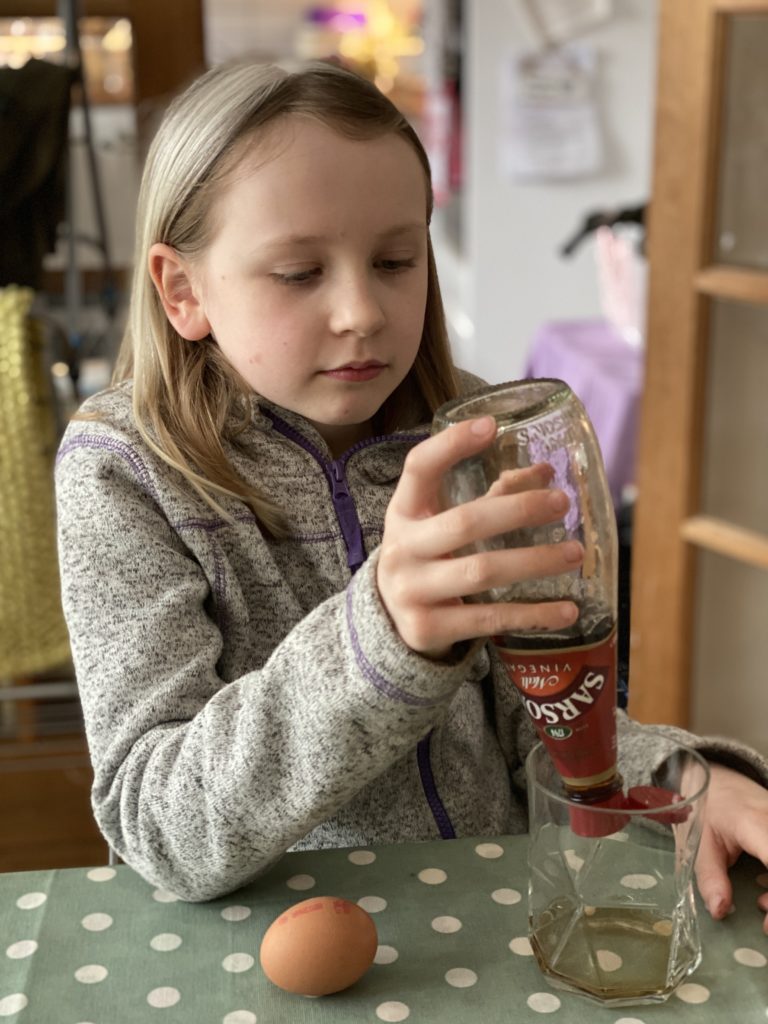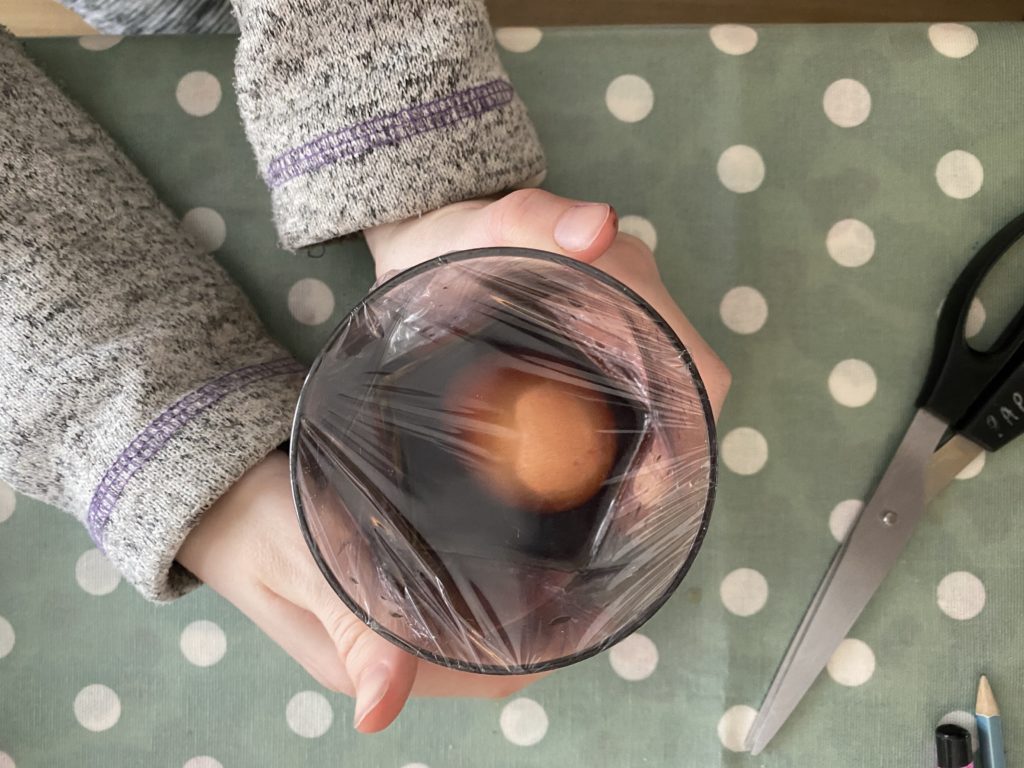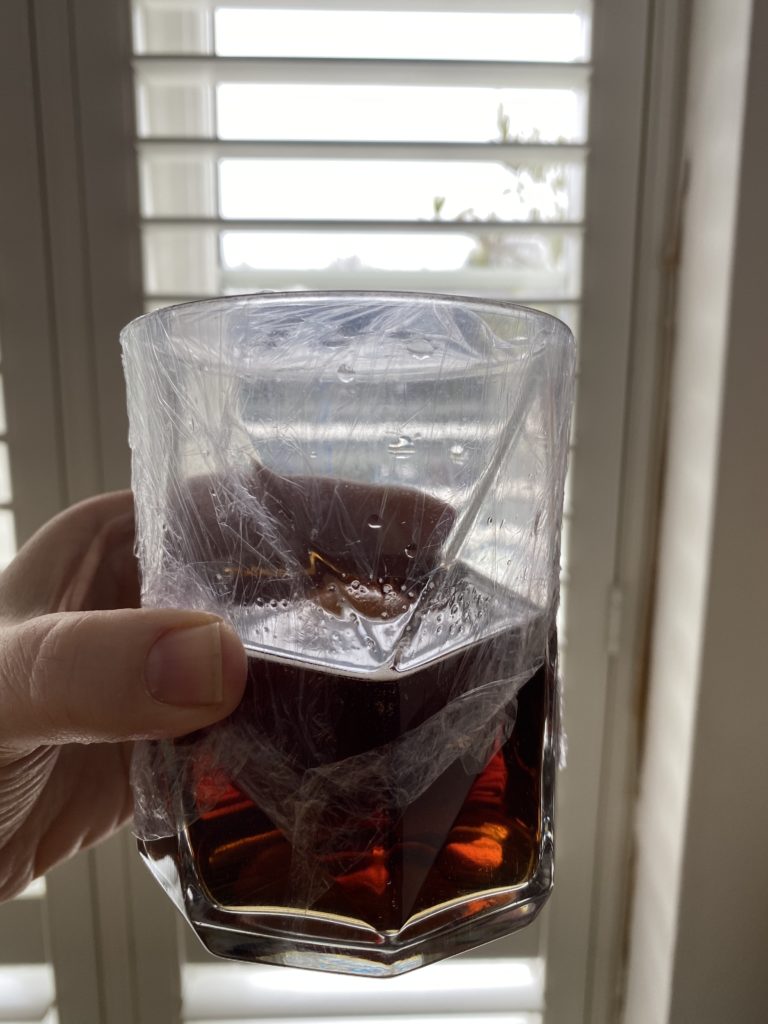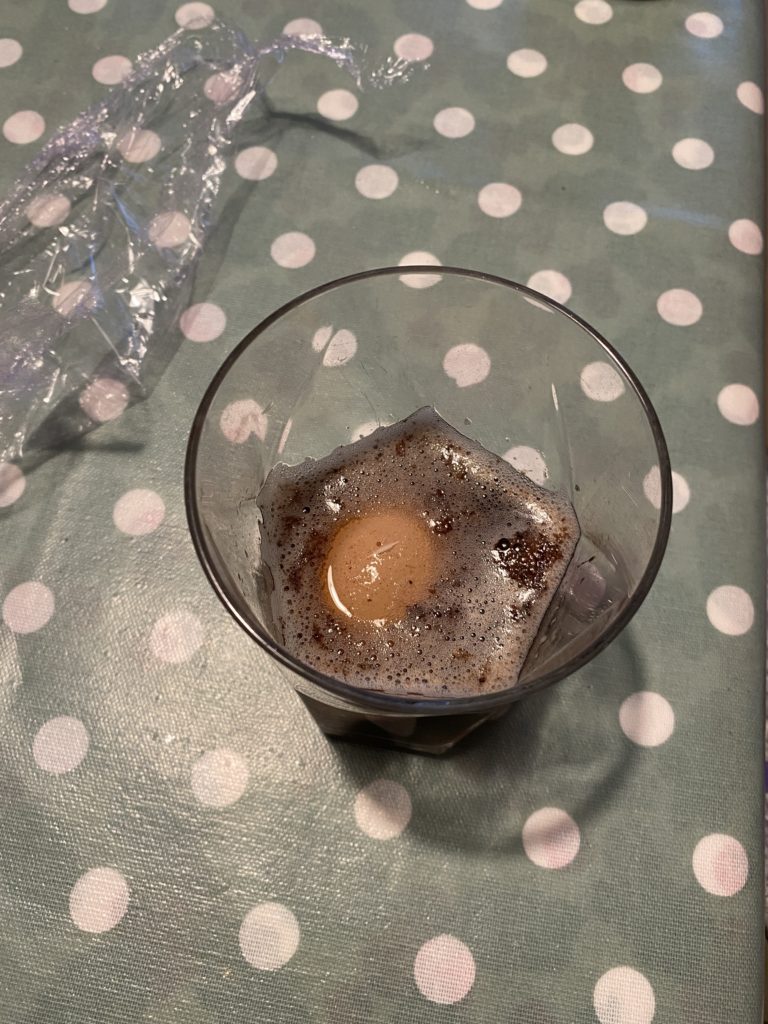Looking for an easy Easter egg experiment for kids? We have shared lots of Easter egg crafts but now my children are a little older they want experiments they can learn from. With Easter coming up next month we wanted to try some science experiments at home with eggs. We have already tried dyeing our eggs with natural ingredients which was great fun.
We’ve used vinegar before with some of our science at home experiments. Today we’re going to share our egg in vinegar experiment and tell you what happens when you place a fresh egg in a cup of vinegar – the results are surprising!
Egg in vinegar experiment equipment
Vinegar
Fresh egg
See through container
Cling film
Egg in vinegar experiment for kids
Day 1
Fill a see-through container or glass with vinegar.
Carefully drop a fresh egg into the container, cover with a piece of cling film and make 2-3 holes in it.
Straight away you will see that a reaction takes place between the vinegar and the egg shell – the reaction is a fancy word for the bubbles appearing
Place the egg and vinegar somewhere cool and quiet and leave for 24 hours.
Day 2
The next day carefully look at the vinegar before pouring it away. Pick up the egg and see if you can make any observations. Has the shell changed colour? Does the egg look different?
Top up the vinegar, cover with cling film and make a couple of holes in it.
Day 3
Continue the experiment until the hard shell of the egg has dissolved completely. This should take about 3 days. How does the egg feel? What happened to the vinegar solution?
What has happened?
A chemical reaction takes place between the vinegar and the shell of the egg which contains calcium carbonate and slightly alkaline. This reacts with the acetic acid in the vinegar, creating bubbles and breaking down the hard shell.
At the end of the 3 days the egg will appear slightly larger and the egg membrane will be slightly squishy. Carefully wash the egg and see how it feels between you fingers – be careful to not squish too hard in case you burst the membrane!










4 Comments
Kim Carberry
March 16, 2021 at 11:10 amWe have done this before and the end result is pretty amazing! It is such a fun experiment. x
Sink or float egg? - the-gingerbread-house.co.uk
March 20, 2021 at 10:55 am[…] and this Spring we are trying some egg-themed science experiments. So far we’ve had fun with dissolving the shell of an egg using vinegar. My youngest thought this was a brilliant experiment so I wanted to do another egg-themed science […]
St Patrick’s Day skittle experiment - the-gingerbread-house.co.uk
February 23, 2022 at 12:31 pm[…] Egg in vinegar experiment for kids […]
Traci Mock
March 12, 2024 at 1:30 amRaw egg or boiled egg?
Does this work with white vinegar, or just red wine vinegar?